Lough Emy
Houses within 5km of this house
Displaying 9 houses.
Houses within 5km of Lough Emy
Displaying 9 houses.
| House name | Description | |
|---|---|---|
| Anketell Grove/Trough Lodge | Bence Jones writes that the Anketells have built three houses in this area but on different sites. The first house was constructed in the mid-17th century. The second one was built by Oliver Anketell and demolished in 1781. The third house was built in the 1780s and was remodelled in the mid-19th century. Andrew Crawford appears to have lived here in 1807 and James Mervyn B[unbury] Richardson between 1812 and 1827 (see Richardson Papers 1197 in the National Archives). On the 1st Ordnance Survey 6 inch map (1836) it is marked as Trough Lodge. It later became known as Anketell Grove. The Ordnance Survey Field Name Book describes Trough Lodge as ‘a very handsome house and has good office houses’. At the time of Griffith’s Valuation the buildings were valued at £50 and were held by Matthew J. Anketell in fee. In 1901, Samuel Griffen, land steward, and family were the occupants. Patrick McKenna bought Anketell Grove and 130 acres in 1928. |

|
| Dungillick House | Dungillick House, the home of a branch of the Anketell family from at least the mid-18th century, is named on the 1st edition 6 inch Ordnance Survey Map (1836). The Ordnance Survey Field Name Book records the house as thatched. In the mid-19th century Matthew J. Anketell was recorded as the occupant. He held the property from Lord Cremorne. The buildings were valued at £20. Occupied by the Burgess family at the beginning of the 20th century. Dungillick was bought by the Land Commission in 1932 and the house was purchased by James McKenna in 1935. This house remains a family residence. |

|
| Mount Anketell/Spring Mount | Located on the Anketell estate and marked on the 1st edition 6 inch Ordnance Survey Map (1836), this house was the residence of George Olpherts and valued at £10 circa 1860. The house appears to have been unoccupied at the time of the censuses in 1901 and 1911 but was in the possession of the Moutray family of Fort Singleton. The 25 inch map (surveyed in 1908) records the name of this house as Spring Mount. It is no longer extant. | |
| Fort Johnston | The Johnstons were in possession of Stramore from about the mid-18th century and Fort Johnston appears to have been in existence from then. This long house is named on the 1st edition 6 inch Ordnance Survey map (1836). The Ordnance Survey Field Name Book describes Lieutenant Johnson’s house as ‘a pretty good house (cottage built)’ called Fort Johnson. On the 25 inch map (surveyed 1908) it appears as a square block so it may have been altered. In the mid-19th century it was the home of Henry G. Johnston held by him in fee. Burke’s ‘Landed Gentry of Ireland’ (1904) records Fort Johston as the family seat but their residence was in Bandon, county Cork |
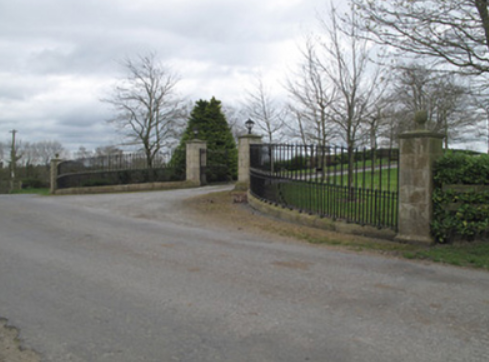
|
| Fort Singleton | The 1st edition 6 inch Ordnance Survey Map (1836) names this house and shows its laid out gardens. The house was the home of the Singleton family, dating from about the mid-18th century. Lewis writes that the home of T. Singleton was ‘situated in a well wooded demesne of 200 acres’ while the Ordnance Survey Field Name Book refers to the ‘neat dwelling house and good office houses’ and that the demesne ‘contains a great deal of fine ash, elm and beech’. The buildings were valued at £60 in Griffith’s Valuation and Whitney Moutray was the occupant, holding from Thomas C. Singleton. Henry Abercrombie, land steward, and his wife were resident in 1901. In more recent times this building has undergone renovation. |
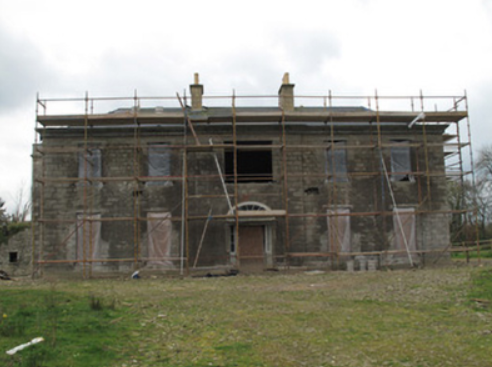
|
| Portinaghy House | Buildings are located at this site on the 1st edition 6 inch Ordnance Survey map (1836). In the mid-19th century the house was valued at £18 and inhabited by Mary Campbell, who held the property from Charles P. Leslie. In 1876, the representatives of Mrs Mary Campbell, Portinaghy, owned 211 acres in county Monaghan. Home of the Edwards family in the 20th century. |
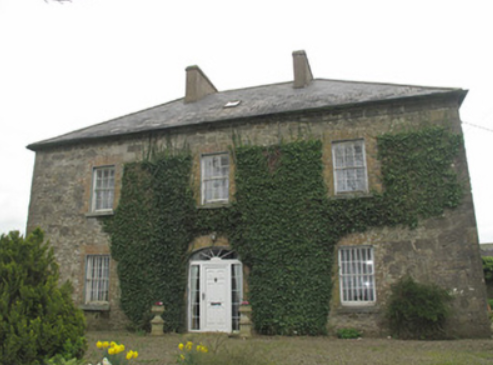
|
| Kiltybegs | Large complex of buildings marked on the 1st edition 6 inch Ordnance Survey map (1836). This was part of the estate of Major John Leslie who held it in fee. The buildings which included a house were valued at £15. Later the home of Charles J. Leslie (see building return 1901 census) and of the land steward, George McGregor, in 1911. Although not classified as a mansion in 1906, the buildings in Kiltybegs had a rateable valuation of £60. This house is no longer extant. | |
| Leek House | An early 19th century house on the Leslie estate, marked on the 1st edition 6 inch Ordnance Survey map (1836). Occupied by William Cochran at the time of Griffith’s Valuation and with a rateable valuation of £20. Occupied by Samuel Barbour and family at the beginning of the 20th century. |
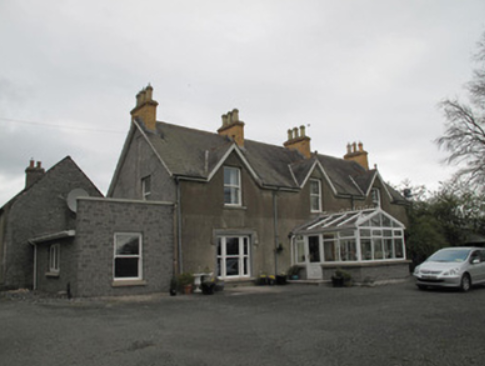
|
| Castle Leslie | The area around Glaslough was part of the MacMahon territory granted to Sir Thomas Ridgeway in 1608, who built a castle on his newly acquired lands. In 1665, Glaslough was bought from the Ridgeway trustees by Bishop Leslie and the castle became the home of the Leslie family. By the 1830s, Castle Leslie ‘situated about 6 chains to the north of the town of Glasslough’ was described as ‘a poor building and in a dilapidated state’. The present house, a Victorian edifice, sometimes known as Glaslough House, is described in the National Inventory of Architectural Heritage as ‘undoubtedly the finest country house in County Monaghan’. It was built for John Leslie in the 1870s to the design of Sir Charles Lanyon and William Henry Lynn. Located close to the site of the original Castle Leslie which it would appear from Shirley’s ‘History of the County of Monaghan’ was still extant in 1877 (page 147, includes drawing) but was demolished soon afterwards. In the mid-19th century the building was valued at £55 and held by Charles P. Leslie in fee. A caretaker’s house and farm buildings valued at £60 were located in the townland of Kiltybegs to the north east. By 1906, the rateable valuation of this mansion was £300. It was occupied by a butler and other servants in 1901 and by Sir John Leslie in 1911. Castle Leslie now functions as a hotel run by Sammy Leslie, see https://www.castleleslie.com/ |
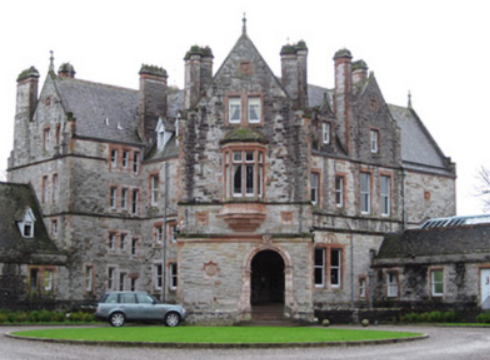
|

